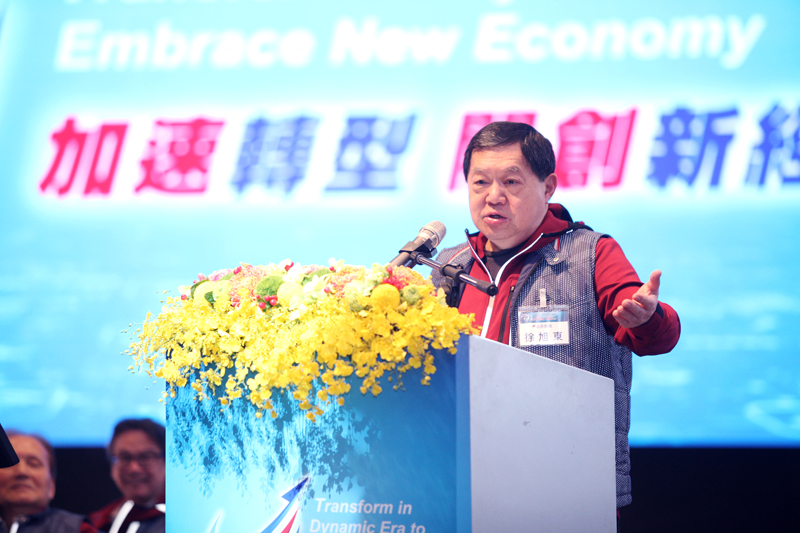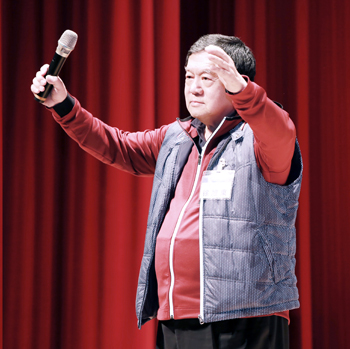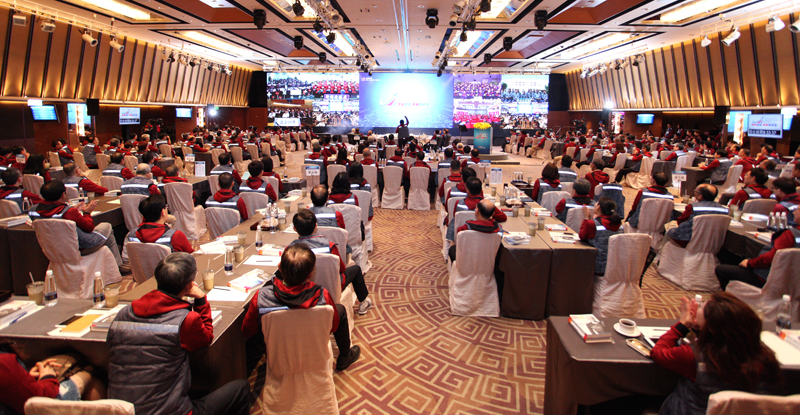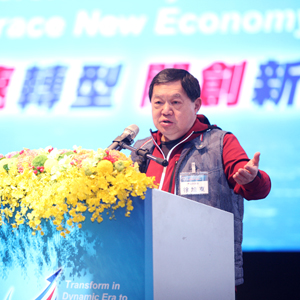2019年01月號 領航者的話
2018 Far Eastern Group Annual Strategy Meeting - Chairman’s Address Transformation in Dynamic Era to Embrace New Economy
Far Eastern Group / Douglas Tong Hsu


As the Far Eastern Group is approaching its 70th anniversary, aside from the recollection of the Group’s growth and success stories, we will focus on three major topics of this year’s Group Meeting: Transformation, New Economy and FEG’s future developments.
1.Hard Power──The Success of Far Eastern Group’s 70th Anniversary
Far Eastern Group (FEG) is approaching its 70th anniversary, and all its affiliated businesses have achieved remarkable performance. The revenues and pre-tax profit of the Group both hit record high in 2018. In retrospect of its past 10 years of performance, despite the increasing profit, the pre-tax profit remained flat, all indicates a lack of growth momentum in revenues.
In evaluating the performance of major group businesses, polyester business has successfully expanded from a regional player to a global presence, production and sales have spanned all over the world, including rPET productions in Japan and Philippines, vertically integrated manufacturing in Vietnam, and the recent acquisition of polyester plants in the U. S. With leading position in green materials, FEG continues to enhance product differentiation.
Our cement business continues to expand through organic growth and merger & acquisition. After years of efforts, the China Sanshui Cement investment finally gained significant progress. The combined cement capacity of Asia Cement and Sanshui has exceeded 100 million tons which extends the operation from central to north China.
At the retail sector, the new “City series” shopping malls have provided brand new retail experience for consumers, and boosted market share in the department stores sector. In order to counter the competition of e-commerce, the Group also pushes its online business to the new retailing era.
In the telecom sector, Far EasTone Telecom is progressing from 4G to 5G, transforming from a traditional telecom provider to be the digital service operator by expanding the value-added services to the conventional price-cutting services.
In the shipping sector, U-Ming Marine continues to renew its fleet, expanding to 48 vessels with total 6.66 million DWT. New fleet of eco-efficient vessels accounts for up to 70% with average age being lowered to 5 years. Currently, the Company is cooperating with international ventures to develop LNG-fueled bulkers in order to enhance its competitive edge in the future.
At the banking sector, Far Eastern International Banks is committed to developing digital banking, and FEIB’s Mobile Banking is well received. The Bank also launched “FE Happy Cards” to integrate group synergy and focus on the development of digital payment platform.
In the land development area, there are over 1 million ping (3.3 million square meters) of land with tremendous potential for further development under the Group in Taiwan, among which Banqiao Mega Tower, Shanghai Far Eastern Headquarters are both landmark buildings across the Straits. Furthermore, with the addition of Ericsson and AWS as tenants at Far Eastern T-park, this has greatly enhanced its international visibility, we will continue to explore the developments of the Group’s land resources.
As for CSR (Corporate Social Responsibilities), with the completion of Far Eastern Memorial Hospital expansion, hardware services become more comprehensive. All Group Foundations will continue to commit to sponsoring events in architecture, technology, art, and sports. Yuan Ze University and Oriental Institute of Technology have initiated industry-academia collaboration with the group companies, faculty and students will continue to strive to connect with the alumni to achieve more outstanding performances in academia, research and innovation, international exchanges, and industry-academia collaboration.

You have all strived to pave a solid foundation for the first seven decades of the Far Eastern Group. Yet, with the rising global capital costs, inflation, financial crisis, coupled with the U. S. protectionism which leads to international trade war, the recovery outlook has reclined. On the other side, the debt level of Chinese enterprises continue to rise, the possibility of another financial crisis, together with the impact of slow domestic demand momentum and widen trade frictions, all could trigger the bursting of asset bubble. As for Taiwan, the society is also encountering challenges including social conflict and decline of export competitiveness. Facing with the changing macro environment, by applying advanced technologies and innovative thinking into AI (Artificial Intelligence), Blockchain, Cloud Computing, Big Data, Mobile technologies, and IoT into supply chain and business model to expedite transformation in order to succeed in the new economy.
(1). Supply Chain in the New Economy
a. Demand-driven: For example, when there are drastic changes in the market, it usually takes 10-18 days in a traditional supply chain to respond, but with demand-driven supply chain, it only takes 4-8 days to respond. Thanks to real-time information, supply chain partners can seize market change and respond expediently.
b. Mass Customization: As a case study of China’s Haier Industrial, its COSMOPlat platform can connect customers, smart factories, and suppliers directly. Customers are able to place their refrigerator orders on the internet, and design their desired models. Upon receipt of customer’s order, Haier immediately starts the customized production.
c. Automation: Mining company Rio Tinto initiated its digital transformation project in 2008 to develop its automated supply chain, autonomous haulage, autonomous train, and manage the mining and its transportation operations of 16 mining sites remotely, the company has successfully elevated its manufacturing efficiency, lowered cost whilst also improve its safety and lower manpower needs.

a. Omni-channel: Omni-channel model provides multiple physical and digital channels, allowing customers freedom of selection. Through diversified products and services, we can understand customer needs and enhance customer relationship. For instance, traditional bank can only sell mortgage, but omni-channel bank can be able to provide related housing services and serve as a one-stop shop.
b. Modular Producer: Modular producer is capable of providing plug-and-play products and services in contrast to the traditional credit card machine which is quite complex for in-store transaction. By adopting the new innovative payment platform, payment process can be streamlined through smart phones and break the limit of the conventional credit card use.
c. Ecosystem Driver: Ecosystem driver focuses on establishing platform, providing comprehensive merchandise and services, and creating great customer experience. For example: Japan’s Rakuten starting from e-commerce, it uses the membership ID database to connect travel, digital content, finance and various services to form a broad business ecosystem.

Digital technologies are accelerating the transformations of business landscape, and also expediting the competitions and eliminations of enterprises. Sears was founded in 1886, once America’s most famous retailer in the 1960’s, it failed to keep up with the e-commerce era and filed for bankruptcy in October 2018. GE and GM, the behemoth of manufacturing and automobile maker, both struggle from its prime to the bottom now. Therefore, even centennial leading companies like them, if they are not able to transform in a timely matter, they will be forced to be eliminated by the environment. This is also my biggest concern. It is not easy for FEG to achieve its current scale, how to successfully transform, cultivate third-generation leaders will be key to move onto the next 70 years. This will also be mine and every leader’s responsibilities. Hope everyone can be highly motivated, set off from the accumulated hard power of 70 years, consolidate supply chain and business model into the New Economy, create an omni-system of structure, platform and connection, promote accelerated transformation of the Group, and march toward a new vision of a centennial enterprise!
Microsoft and Disney serve as the most successful transformation examples. Thus, they are able to secure their leadership position in their fields. Alibaba also seized the opportunity of internet, conducted digital transformation to constitute its ecosystem. How should the Far Eastern Group accelerate its transformation, we should deliberate on the six key questions including: How strong is the digital threat? Which model is best for future development? What is the competitive advantage in the new economy? How to connect with IoT through mobile technology? Do we have capabilities to reinvent? Do we have leadership to make transformation? Furthermore, in line with global expansion, we should also enhance on training the foreign language capability of our colleagues, simultaneously elevate the level of our talents and businesses. This year, the two gifted books title of “Blue Ocean Shift” and “Hit Refresh.” These books will help you better understand the competitions, lead our organization away from the highly competitive red ocean, create brand new blue ocean market, absorb successful transformation experience, and strengthen competitive advantage.
Aside from active transformation, we will strive for continuous growth. In terms of operating performance, we should strengthen collaboration among affiliated companies, enlarge synergies, and boost profit; in terms of reputation, Far Eastern is an outstanding conglomerate. We shall continue to strengthen the group image, safeguard the group reputation, let customers and the public become advocacy of FEG, to speak positively for the Group. There are six aspects to strengthen group image including employee appearance (such as behavior and service attitude), external communication (such as broadcasting on the internet, press propaganda), online appearance (website/page design), visual appearance of logo/slogan, positive CSR feelings, and environment expressions (building/factory design).
Jim Collins and Jerry Porras wrote in their book titled “Built to Last”: “To be built to last, you must be built to change.” I would like to share with all Far Easterners that hope we can all look like the leading actor in the James Bond movies, even being surrounded by strong enemies, we can still respond gracefully and win with vitality!#



















